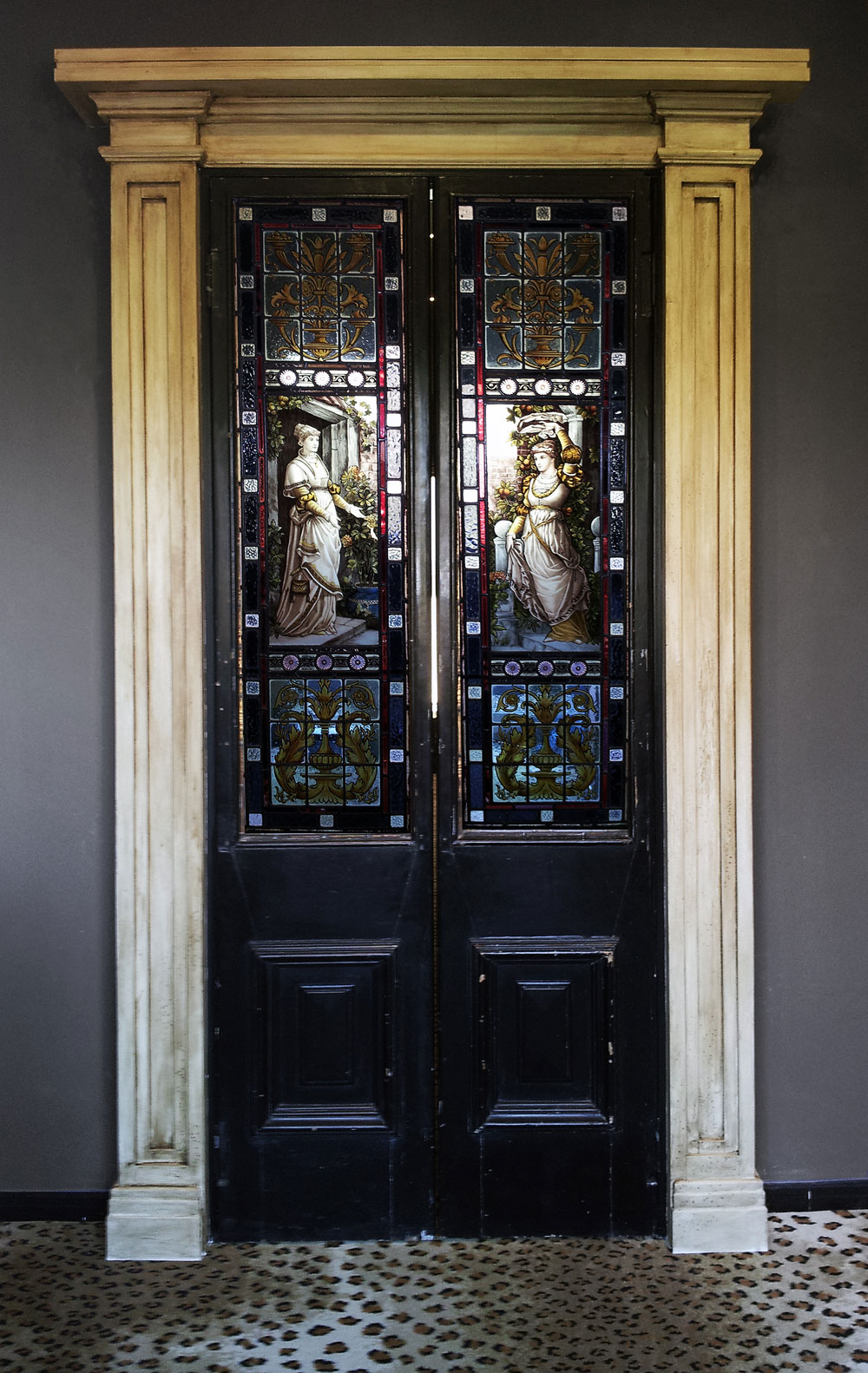
Architectural door frame by Groth & Sons
Throughout history the doorway has protected man from the outside world, acting as security and providing shelter and warmth. In mythology the door symbolizes hope, opportunity and liberation and the passage to a new life. Doorways also hold spiritual and religious significance, for instance, the three doors of a church or basilica denote faith, hope and charity and in architectural terms doors and windows constitute the architectural language in which a building can be read.
Each door is a boundary; designating the transition from one space to another, but is there something more than just the functional division of space? Is their role more than that of shutting off one area from another and protecting its inhabitants from the inherent dangers of the outside world?
Part of the mystique of doorways is that they are in-between places, in which the inside and outside worlds come together, where private and public meet, in the above image a Groth & Sons creation shows off these reclaimed French doors set in an elaborate door casing inviting requests to enter into an adjoining reading room.
Doors of perception
Without consciously knowing, you may be aware that some homes are more welcoming than others, they appear to summon and greet their visitors better, offering so much more than access and egress. A distinct and clearly articulated doorway reveals a residences identity more than any other architectural feature and beckons visitors to enter and explore the world beyond. Your homes first impression, offering a flavour of what’s to come and a well-defined doorway builds a sense of anticipation, teasing and inviting visitors and adding a dramatic element.
Doors play a principal role in interior architecture – therefore they warrant careful attention. Get creative: doors can be finished in material such as leather or linen adding a textural contrast, making them exciting and unexpected. They don’t even need to be of timber construction but can be manufactured in metal or glass. You can play with scale to really make a statement; taking them all the way to the ceiling makes the room feel taller.
Doors don’t always have to be hinged in the conventional fashion either, think about sliding, pivoting, folding or even revolving varieties. Imagine standard doors as panels instead, or be imaginative and go the whole hog and turn an area of wall into a secret door, concealing the entrance totally. Secret doors can be finished in the wall treatment, can incorporate wainscot panelling, art works or even a tromp l’oeil. The cabinet makers at Groth & Sons have even manufactured bookcases and small section of libraries to create access into the rooms beyond.
Sliding doors can used to open up and frame views merging interior and exterior spaces, whilst traditional style shoji screens diffuse daylight through translucent panels, and offer a different ambience to the standard panel variety. Doorways can be set in porticos and display architectural qualities entablatures pilasters.
Adornments
Door furniture, including handles, decorative hinges, escutcheons and cremones, is another opportunity to introduce texture and contrast in materiality, also adding that sculptural element. But if you want to go for that special look consider the door surround, architectural door frames complete with columns, pilasters and canopies really do make a design statement. These can be finished in the interior colour or go for that striking juxtaposition by getting creative with contrasting colours, textures and finishes.
For that special entrance, get resourceful and inventive. For more information talk to Amos at Groth and Sons, the bespoke cabinet makers and interior architects – Call 0419 408 988.




